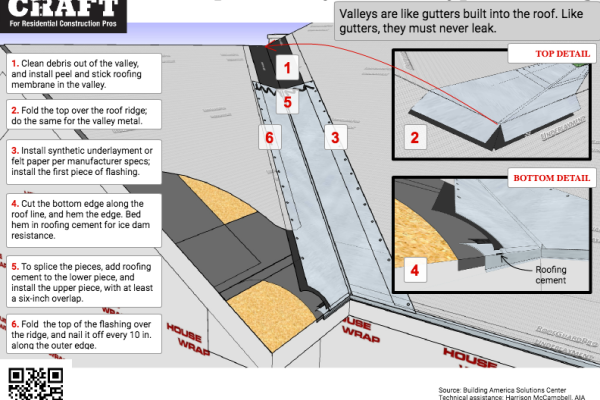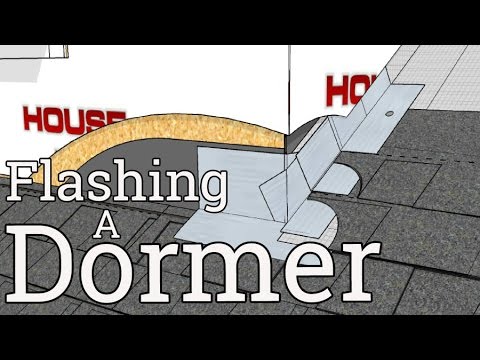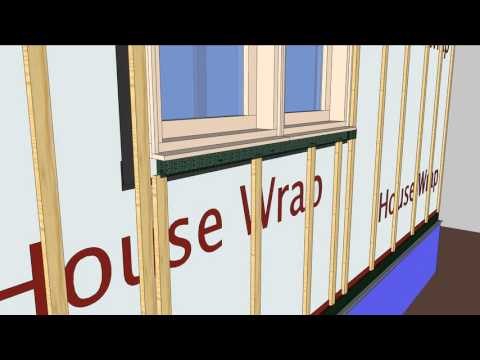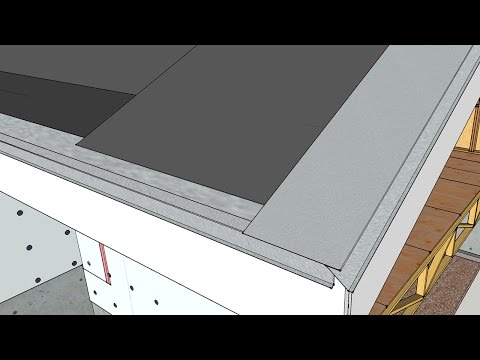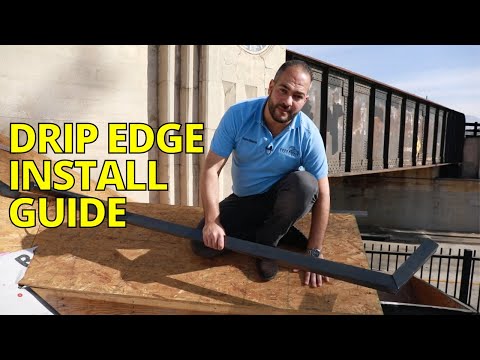In a previous video we covered how to flash roof edges before shingling. In this video, we’ll flash the valley.
Step by step open valley flashing:
- First, clean the debris out of the valley, including sawdust, nails, and whatever else is in there.
- With a clean valley, you can lay down some peel and stick roofing membrane.
- Fold the top over the roof ridge and cut the bottom along the drip edge metal.
- Install synthetic roofing underlayment or felt paper according to manufacturer specifications and then install the first piece of valley flashing.
W-type valley flashing is more rigid for handling, so it stays straight, and it stops waler rushing down one side of a roof from rushing back up the other side.
- Cut the bottom edge, and fold it down over the drip edge. Make sure to cover the gap at the bottom of the raised ridge to keep bugs and ice out.
- To splice the pieces, add roofing cement to the lower piece, and install the upper piece, with at least a six-inch overlap.
- Fold the top of the flashing over the ridge, and nail it off every ten inches or so along the outer edge of the flashing,
Now, this valley will carry water off the roof and away from the house.
—Technical assistance from Harrison McCampbell, AIA, David Joyce (Synergy Construction), Dan Kolbert (Kolbert Building), Don Shaw (IKO Roofing) and Dan Whitmore (Hammer and Hand—whose advice was "Move somewhere awesome like Oregon where ice dams are not a problem..." — Thanks, Dan). 3D Modeling by Matt Jackson (Digital Jobsite) and Dan Morrison. Music: Fortunate Son by Silent Partner. Produced by Dan Morrison.
